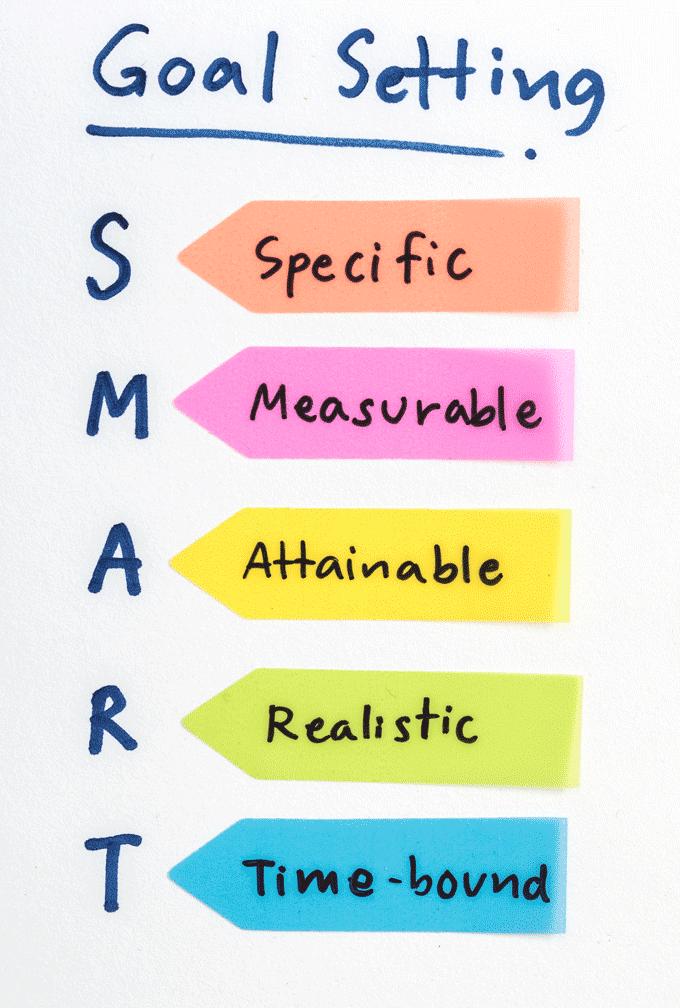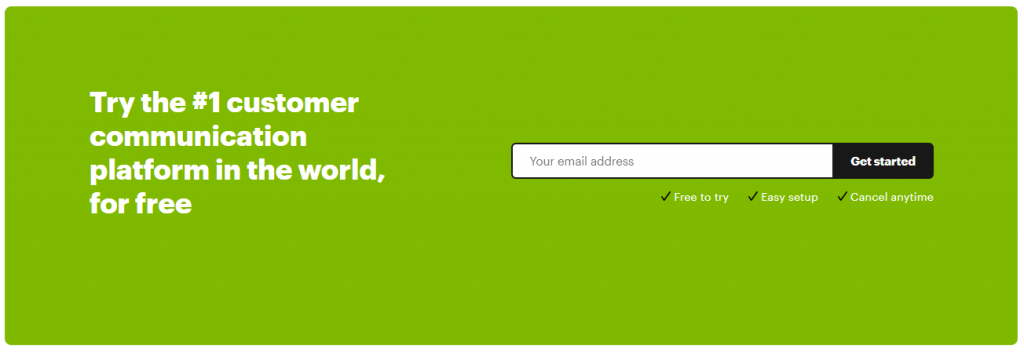If making more sales and increasing revenue is your road to success then creating a sales strategy is the map that will get you there. Without a clear and well-defined strategy you risk driving your business in the wrong direction.
Seeing as it is very important to map out a successful sales strategy we’ve prepared advice on how to craft it the right way. But first let’s explain what it means.
What is a sales strategy?
Let’s put it simply!
“A sales strategy is the plan you make on how to sell your product and services in front of customers.”
Your winning sales strategy should focus on all the different parts of the sales process in the organization and create actionable steps.
What are the basic things you should include when creating a sales strategy?
Consider the following:
- Sales goals
- Customer profile
- Buyer journey/Sales pipeline
- Target market
- Distribution channels
On every step of the sales strategy you should define goals you need to achieve to build a successful sales strategy. Later in the article we will cover how to breakdown different parts and measure the results.
Too many businesses formulate a great plan, but never manage to execute on it. To escape this pitfall make sure to set SMART goals to achieve actual results.
What is a SMART goal:

Keep in mind that as you evolve your business over time so should your sales strategy so keep gathering data and refining it as you go.
But, where should you start?
The most important component in a winning sales strategy is your customer. Let’s see how you can properly define them.
Define an ideal customer profile
No matter what you are selling you should always include the problems you are solving. The next step is to look at your current data and find as much information as possible on your current customers. If you are not selling yet then you need to brainstorm and refine your customer profile at shorter intervals.
It is very important to differentiate profiles whether you want to sell to companies or individuals.
- If your business model is B2C(Business-to-Consumer) then you should focus on collecting data on their demographics, interests, and behavior. If you are already selling then use the data from your advertising and analytical instruments to base your persona on real data.
Basic characteristics to include in a B2C customer profile:
What problem are you solving:
- Age:
- Sex:
- Location:
- Device:
- Interests:
Nowadays advertising instruments like Facebook Ads and Google Ads are very automated and can create high quality buyer personas within their algorithms. This means that you shouldn’t overcomplicate the buyer persona in the beginning.
As you start to grow you can go more in depth into the profile.
- If your business model is B2B(Business-to-Business) then you should focus your profile on the company attributes, industry and external influence.
If you already have a working business then the first thing you should do is look at your current customers and find high quality clients to use as a base.
The way you find who is your best customer is by checking which customers pay the most but requires the least amount of effort. Use the quadrant below to position your clients and navigate from best to worst.
If you are not selling yet then ask yourself:
What type of companies will benefit from the solution I found to a specific problem?
Try to brainstorm and test as fast as you can with rapid changes in your ideal profile based on as much data as possible.
Basic characteristics to look for in a B2B customer profile:
- What problem am I solving for this company?
- Where can I find them?
- Annual revenue:
- Industry:
- Type of business(SaaS, Online shop, brick, and mortar, etc.)
From these basic traits I urge you to find more specific characteristics depending on what you are offering. Usually a B2B profile will be much more complex and requires an individual approach. Try to find “out of the box” similarities in the companies that are your best customers.
Now that we know are our target customers we must find them and position ourselves in a way that gets them attracted to the business.
What does it take to attract your target customer.
Nowadays buyers have the whole internet at their fingertips to find information on the products and services they are looking for. This means that most of the prospects come prepared when interacting with your business even in the first conversation. It is not enough to give them a basic sales pitch.
If your sales team, or business in general, doesn’t provide them with more insight and build trust with the prospect then they don’t have a reason to interact with you.
That is why crafting a full inbound and outbound sales pipeline is crucial in your sales strategy. That way you can prepare for every step guiding your prospect smoothly from their first interaction to transaction and beyond.
Find ways to engage the prospect at every step of the sales pipeline and just help them find the solution to their problem. That way you will be their trusted advisor and build long-term relationships.
But what if you choose to have a self-serve business model? Is it even profitable to have a salesperson guide your prospects along their journey? Or you should automate the process?
When you should add sales to a self-serve business model
Whether you use personal conversations or meetings depends very much on your business model and average prices. Align your strategy with the business model and do the math to make sure that when you draw the line you are not losing instead of making a profit.
Say you are selling a subscription service of $20/month it wouldn’t be justified having salespeople cold calling with a sales pitch and doing meetings with complex sales cycles.
On the other side you can not fully automate the process because there will always be a point where people will want to talk with a specialist to consult and close the deal. This is especially true for a deal size of over $5,000 or long-term contracts.
For industries where customers usually want to talk on the phone with a representative we designed the Live Chat Alternative software. It allows website visitors to start a voice conversation with your company directly as they are browsing.
Similar to traditional live chat but for voice conversations. That way representatives can use this powerful way of communicating with a voice to influence prospects and close deals faster.
If you want to learn more about the software you can visit our home page.
Set clear goals for inbound sales and outbound sales within the sales team
One of the most important factors I found in successful sales strategies is “focus”

The more you can break down the sales process in different stages the more your sales reps can focus and produce better results. What this means is that when creating your winning sales strategy you should set specific sales goals for each stage and execute on concrete tasks.
For example giving five sales representatives the tasks to generate leads, qualify leads, negotiate opportunities, and manage an account will quickly result in loss of productivity. But spreading all stages among your reps will create a system that can scale.
Here is an example of how you can spread your tasks among your employees in a B2B business model:
- First person: Responsible for generating leads with X amount target per day/week/month.
- Second person: Responsible for qualifying leads and setting up discovery calls with X amount target per day/week/month.
- Third Person: Responsible for doing discovery calls and meetings. Follow up on potential deals. Close deals. X amount target for follow-ups and deals closed.
- Fourth Person: Responsible for managing the account and ensuring customer success.
Use this just as an example but be sure to craft your way of spreading tasks. Just focus on productivity and you may find that you need to spread or combine certain tasks for better results.
Be the trusted advisor for your customers

There is a great feeling when you own a business and it is doing great. All you think about is how can you grow the company further and be the best at what you do.
None of this is relevant if you want to scale and grow your business.
What you should be passionate about is what impact does your company make in the lives of your customers. From then on the company begins to have a natural growth.
With a larger part of companies moving to the internet and digital they sometimes forget how valuable every communication with your customers can be. Use every interaction as a way to explore, understand, and get to know your customers better.
As Jay Abraham puts it:
“Fall in love with the people who pay you!”
Don’t think only about your company’s success. If your customers succeed in their journey thanks to you and your business then everything falls into place.
What are the steps you can take to transform your business into a trusted advisor company for customers?
- Find the purpose and mission for you and your business. Productivity, innovation, company values must all be present when you create your company vision.
- Include your customers in the bigger picture. How are you going to impact their lives? Focus on the outcome for them, not the result for your company.
- Inject passion and drive into your employees. How can you engage with your employees more and make them a part of your vision?
If we put this in perspective to your sales strategy. Now you are not looking for ideas on how to engage customers in their consideration stage with a blog post.
Rather you are concerned with your customers’ problems and providing value. The content is intended to help not manipulate which creates trust and naturally moves prospects closer to the sale. That way employees also feel part of something big and inject passion into their work which raises their productivity.
Be deliberate when moving upmarket
As your company grows so will your aspirations to increase sales, refine the strategy for new prospects and increase transaction value for current customers.
It looks simple enough. Add some additional products or services, up-sell with combined offers, add a few sales representatives and set off on a journey to raise your revenue and average value per customer.
Moving upmarket requires more than just a complimentary product or service as in most cases you need to enter into a whole new price range. Inevitably this requires you to shift your target market and value proposition. Leading you to the creation of a new buying process that requires careful planning and analysis.
In a sense you will need to create a different product or service based on innovation and new market positioning.
Here is where some questions arise:
Should you market your new product or service as part of your existing solutions?
….or
Should you create a different sales strategy and market positioning?
Will you be able to use the same distribution channels?
These and many other questions will have to be faced when deciding to move upmarket with your company. A lot of people say that moving upmarket is easier than moving downmarket. This could be true but it requires careful planning and taking into consideration your current product offering to keep your positive traction.
Before you pivot you should experiment with your sales strategy
A great feeling of excitement comes when starting something new. You have a great idea and you want to execute it immediately. It is easy to get emotional in your business but you will always have to remember that changes in the company especially in the sales process need to be backed by data and reason.
Quickly pivoting from one idea to another and shifting the whole company focus can greatly slow down your progress.
So how do you shift with emotion and drive but also keeping common sense to ensure success?
- First you need to create an overview of the goal you wish to achieve. Is it moving to enterprise clients? Or do you wish to achieve a spike in user growth?
- You will need to define what are the factors that will have an impact. Create a process around them and find a way to track progress. This way you are not emotionally concluding but using actual numbers to show if this pivot is successful.
- Breakdown the process into smaller trackable numbers. Don’t just say we need X amount of clients. Put more data like the number of outbound sales calls, qualified leads, discovery calls scheduled, sent offers, accepted offers, and received payments.
- If everything works how can you scale? This is why building the process and breaking it down is so important. Now scaling is a matter of increasing numbers at different stages of the process. Find the most cost-effective way whether this is new human resources or automation tools.
For example the Live Chat Alternative software was built to help companies at the stage where traffic is coming to the website but most of it is not converting. Using it will help you increase conversions and scale the entire sales strategy further down the line.
If your sales and marketing strategy is working and customers are wildly in love with your business you need to find ways to accelerate growth and reach.
Don’t look for partners at the beginning but reach out when you need to scale
A big mistake a lot of companies make is to use partners as a main source of income at the beginning. Another similar mistake is outsourcing your sales and marketing.
First, you need to learn everything you can about your customers, create your sales strategy, and then find people that can help you execute, increase sales and scale. The next step after your product or service is selling successfully is to find partners for distribution and accelerating growth and reach.
Why wait for this stage?
Because most marketplaces or partners are looking for products and services that already sell so they can keep their customers happy. They are not companies or people to help you refine your strategy.
Partners and distributors should be part of your overall sales strategy and help you differentiate income sources to further fuel existing growth. What you can do is assign a designated partner and distributor account manager to ensure success with your expansion. Do keep in mind that not all partners will be valuable as they have their own policies and in a perfect scenario they should align with yours.
Summary
Every business has its specifics and you will need to refine what we covered in this article to match your goals. Our goal was to set you on the right path and give you the basics of crafting your sales strategy. By creating it you will have a map that you can follow to reach the sales goals you set for the company.
Begin with finding your ideal customer and learning everything about them. Research how you can reach them and provide actual value that raises trust and moves them further down your sales pipeline.
Inject passion into your employees and business by finding your company mission. This will transform into great value for your customers and this will put you into the position of a trusted advisor.
Use certainty and drive but back up decisions with data to move upmarket and pivot your sales strategy. When you have a successful sales strategy, reach out to partners and distributors to accelerate growth.
If you want to check out the benefits of our live chat software for businesses visit the benefits of live chat alternative.




